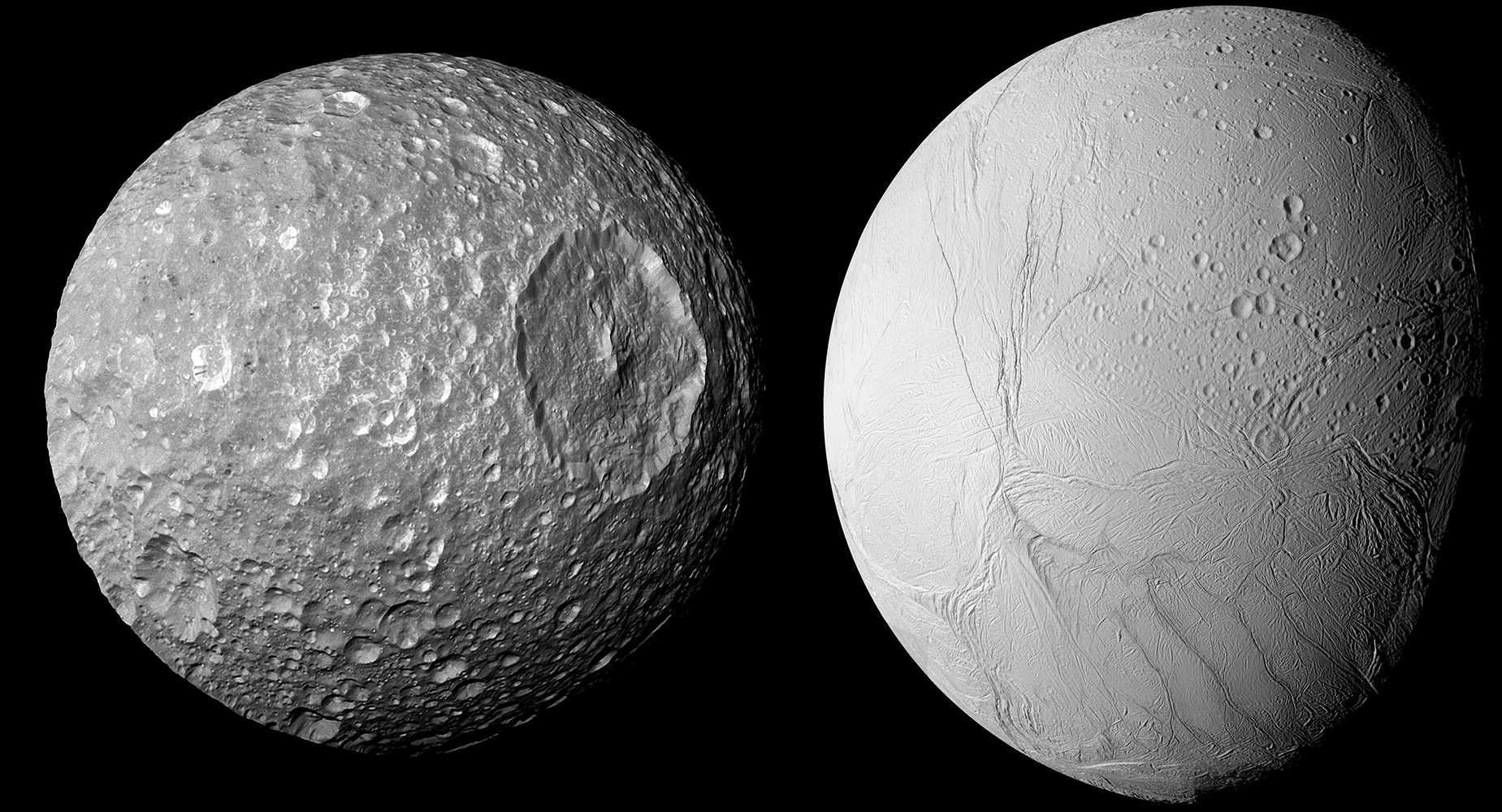Mimas has an ocean under the surface too
Saturn’s moons Enceladus and Titan have one, as do Jupiter’s moons Ganymede, Callisto and Europa and the dwarf planet Pluto: a liquid ocean beneath their icy surfaces. Perhaps the same is true of Saturn’s moon Mimas, as a Southwest Research Institute scientist suspects. Dr. Alyssa Rhoden, a specialist in the geophysics of icy satellites, actually set out to prove that Saturn’s tiny, innermost moon is a frozen, inert satellite. Instead, she found evidence that the moon also has a liquid inner ocean.
One of the most fundamental discoveries of the past 25 years in planetary science is that worlds with oceans beneath layers of rock and ice are relatively common in our solar system. Worlds like Earth with surface oceans must be within a narrow range of distance from their stars to maintain the temperatures that allow liquid water to exist on their surfaces. Inner water ocean worlds (IWOWs), on the other hand, are found at a much larger range of distances, greatly expanding the number of habitable worlds in the galaxy.
“Because the surface of Mimas is heavily scratched, we thought it was just a frozen block of ice,” Rhoden said. “IWOWs, like Enceladus and Europa, tend to be fractured and show other signs of geologic activity. As it turns out, the surface of Mimas fooled us, and our new understanding has greatly expanded the definition of a potentially habitable world in our solar system and beyond.”
Tidal processes dissipate orbital and rotational energy in the form of heat in a satellite. To achieve the internal structure derived from Mimas’ libration, the tidal heating inside the moon must be large enough to prevent the ocean from freezing, but small enough to still maintain a thick ice shell. Using tidal heating models, the team developed computer models to find the most plausible explanation for a stable ice shell 22 to 32 kilometers (14 to 20 miles) thick over a liquid ocean.
“Most of the time when we build these models, we have to fine-tune them to achieve what we observe,” Rhoden said. “This time, the most realistic scenarios for ice shell stability and observed oscillations proved to be evidence of an internal ocean.”
The team also found that heat flow from the surface is very sensitive to the thickness of the ice shell, which a spacecraft could verify. For example, the Juno spacecraft is expected to fly by Europa and use its microwave radiometer to measure the heat fluxes on this moon of Jupiter. These data will allow scientists to understand how heat flow affects the ice shells of ocean worlds like Mimas.
